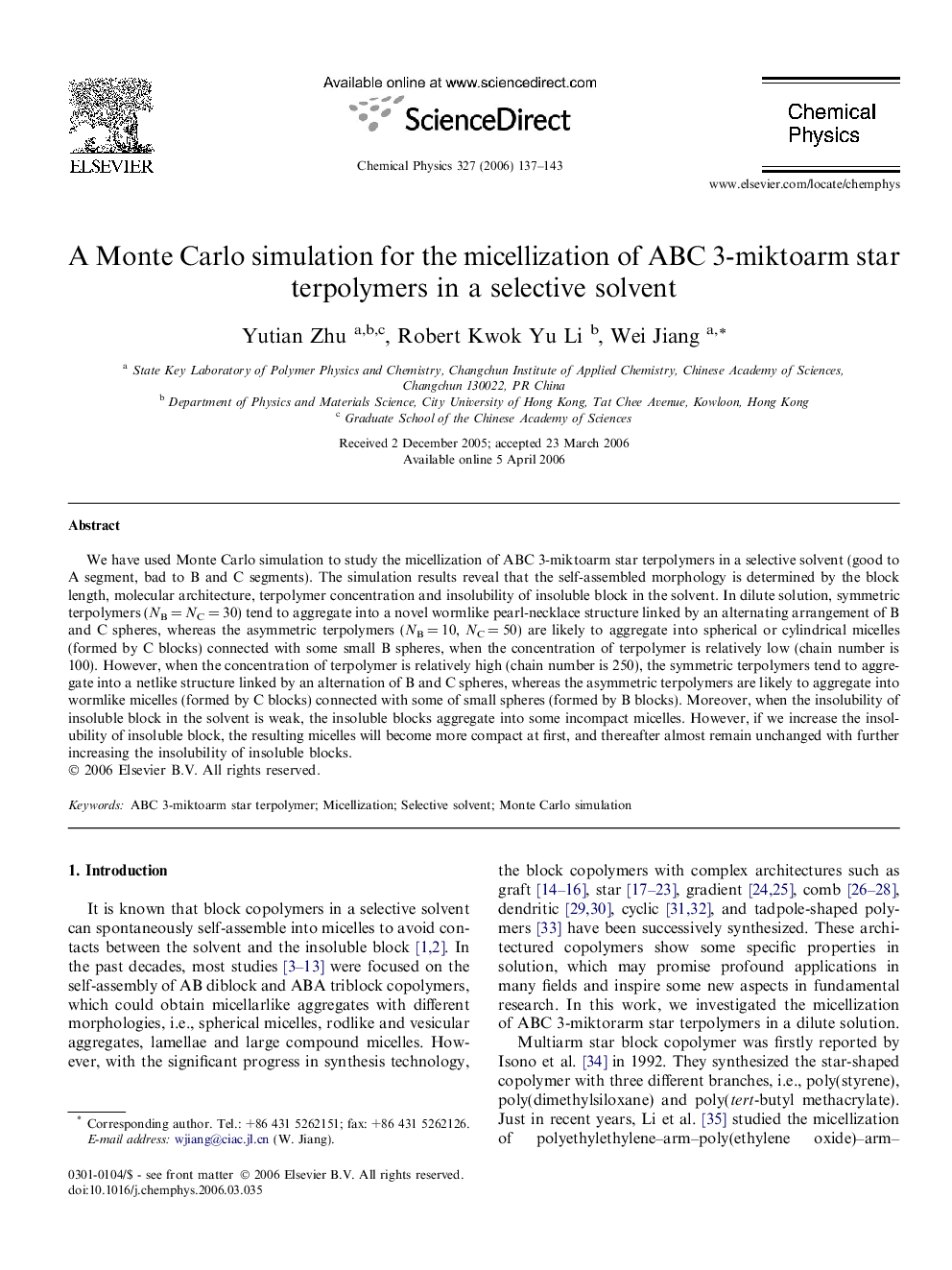| Article ID | Journal | Published Year | Pages | File Type |
|---|---|---|---|---|
| 5377031 | Chemical Physics | 2006 | 7 Pages |
Abstract
We have used Monte Carlo simulation to study the micellization of ABC 3-miktoarm star terpolymers in a selective solvent (good to A segment, bad to B and C segments). The simulation results reveal that the self-assembled morphology is determined by the block length, molecular architecture, terpolymer concentration and insolubility of insoluble block in the solvent. In dilute solution, symmetric terpolymers (NBÂ =Â NCÂ =Â 30) tend to aggregate into a novel wormlike pearl-necklace structure linked by an alternating arrangement of B and C spheres, whereas the asymmetric terpolymers (NBÂ =Â 10, NCÂ =Â 50) are likely to aggregate into spherical or cylindrical micelles (formed by C blocks) connected with some small B spheres, when the concentration of terpolymer is relatively low (chain number is 100). However, when the concentration of terpolymer is relatively high (chain number is 250), the symmetric terpolymers tend to aggregate into a netlike structure linked by an alternation of B and C spheres, whereas the asymmetric terpolymers are likely to aggregate into wormlike micelles (formed by C blocks) connected with some of small spheres (formed by B blocks). Moreover, when the insolubility of insoluble block in the solvent is weak, the insoluble blocks aggregate into some incompact micelles. However, if we increase the insolubility of insoluble block, the resulting micelles will become more compact at first, and thereafter almost remain unchanged with further increasing the insolubility of insoluble blocks.
Related Topics
Physical Sciences and Engineering
Chemistry
Physical and Theoretical Chemistry
Authors
Yutian Zhu, Robert Kwok Yu Li, Wei Jiang,
